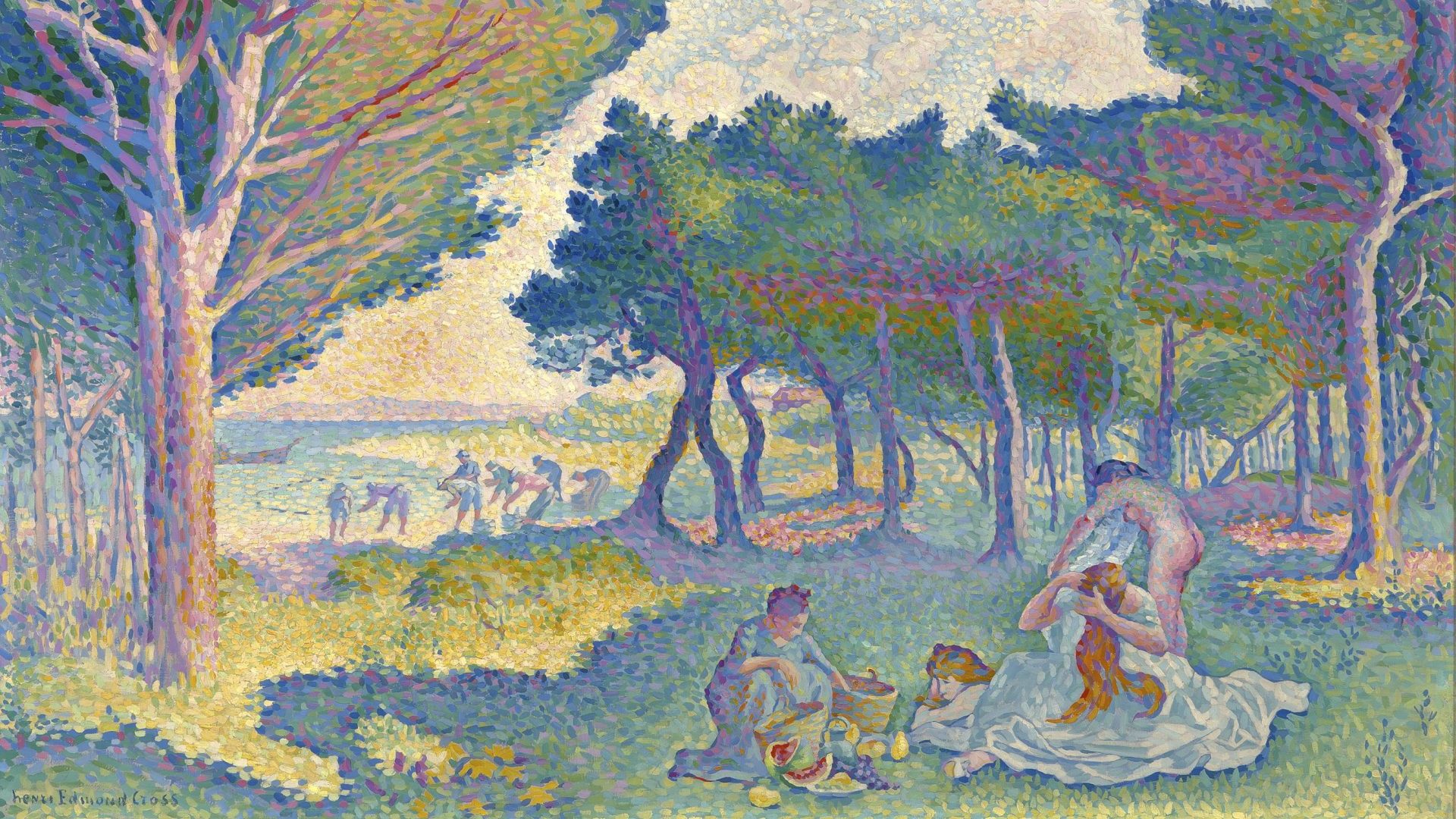There comes a moment in the life of every reader when they pause, purse a thoughtful lip and ask themselves, are novels getting longer?
For me that moment came when I picked up Collected Works, the debut novel by the Swedish writer Lydia Sandgren. Agnes Broomé’s English translation has been highly anticipated since the book became a bestseller in its native Sweden in 2020, selling more than 100,000 copies in its first year, and it looks certain to be in the reckoning when the Man International Booker Prize longlist comes around.
Collected Works is an absorbing tale focusing on a trio of friends from Gothenburg: Martin Berg, a publisher who once had dreams of being a great novelist, his old schoolfriend Gustav von Becker – brilliant artist and a kind of Swedish Withnail, and Cecilia Wikner, a gifted academic, writer and artist who marries Martin Berg, has a family, then disappears without trace, the mystery that underpins this epic literary novel.
Collected Works is ambitious, assured and draws the reader deeply into an orbit that swings from the late 1970s to the present day. It is also what can only be described as very long. Seven hundred and thirty-three pages long, in fact.
A long novel is always a supremely confident move by any writer, not least a first-time one. Sandgren spent a decade working on the book outside her day job as a psychologist and it shows. Every sentence has been constructed with immense care. Every scene has been honed and polished until it sings. There is not a word that hasn’t been carefully considered before its inclusion, then reconsidered with each redrafting.
Novels are often described as being “crafted” and it’s usually just as a handy synonym for “written”, but Collected Works has been put together with the care of a medieval scribe and the patient skill of a master carver.
It is without doubt one of the most meticulously built works of fiction I’ve read in a long time.
Tackling the book takes a certain level of commitment. In terms of word count, for example, you could spend the time it takes to read Collected Works reading Slaughterhouse 5, The Great Gatsby, Fahrenheit 451, Of Mice and Men, Animal Farm, Lord of the Flies and still have room for Bonjour Tristesse. Collected Works is 100 pages longer than Moby Dick and one page longer than the first edition of Ulysses.
Offering a reader upward of a quarter of a million words is a big ask, not least in this attention-sapping, time-scarce epoch with countless distractions tugging constantly at our sleeves. A writer must be sure of themselves and sure-footed enough in their writing to pull off a book of this kind of length.
Which is why, as I prepared to invest a significant number of hours in a book by an author of whom I knew nothing beyond a brief biography on the cover, I found myself thinking about Hilary Mantel’s Wolf Hall trilogy running to nearly 2,000 pages. I thought about David Foster Wallace’s Infinite Jest straining shelves at just over 1,000 pages and Vikram Seth’s A Suitable Boy, which clocks in at just under 1,500 pages. Eleanor Catton’s The Luminaries and Donna Tartt’s The Goldfinch both burst through the 800-page barrier, and I began to wonder whether books really have been getting longer.
Cursory research seemed to suggest so. Between 2000 and 2015 the average length of published novels grew from 320 pages to 400, I learned. For more recent data I turned to the Booker Prize shortlists from the last five years. Their average page count was 387 with the average length of the winner being 410 pages. Weighty, indeed, but not necessarily intimidating or excessive.
The Covid pandemic prompted a surge in sales of longer novels as locked down readers sought to finally tick off some of those hefty classics. In 2020, sales of Don Quixote (1,056 pages) and Anna Karenina (854) nearly doubled while the 1,440-page War and Peace saw its sales shoot up by almost 70 per cent.
This was still all pretty circumstantial; I’d have to go further back into literary history for a more definitive answer. But first, there was a book to read.
It didn’t help with time demands that the current series of Succession began while I was reading Collected Works, but I soon realised there were similarities between the saga of the Roys and the Swedish novel. The appeal of Succession is astronomical despite everyone in it being irredeemably dreadful human beings. The same is true of Collected Works in which the leading trio of Martin Berg, Gustav von Becker and Cecilia Wikner are, if not irredeemably appalling, then still pretty grim individuals.
Granted, we spend a great deal of the novel in their youth, and who among us can say we were not absolutely insufferable in our teens and early 20s? These three, however, and the two men in particular, never shake off their pretentiousness, self-absorption and intellectual snobbery. Each the product of privilege – they’re all from rich families with Gustav effectively funded by a distant yet wealthy grandmother – the men in particular while away their prime years getting steaming drunk in bars and at parties jousting with equally insufferable youths over art, philosophy and literature.
At times I wondered whether Jonathan Franzen had transplanted his relentless but futile quest to write the Great American Novel to Europe instead, but Sandgren has far more about her than Franzen, including a lightness of touch that means you don’t feel the constant presence of the author looking over your shoulder. The book’s length gives the characters and scenes space to breathe until you’re entirely immersed in the world Sandgren creates. Curiously, despite the characters being exactly the kind of people you’d skip parties altogether to avoid, and possibly even move house, this long immersion in their lives means you find yourself caring about what happens to them in a manner reminiscent of the work of Sally Rooney.
Sandgren conjures different eras with great skill. Period detail is never over-egged, with just enough cultural reference to anchor you in time without distracting from the narrative. There’s a terrific description of a fictional film from the 1990s, for example, one starring Leonardo DiCaprio and Winona Ryder, whose function was “to gaze at DiCaprio with doe eyes while he did various types of drugs and to provide opportunities to zoom in on skinny legs in torn nylon stockings”. The title song was performed by “a British indie band that had one, and only one, hit”. I almost found myself searching IMDB for this, it felt so familiar.
When Cecilia disappears, Sandgren’s skill really comes to the fore. Until then Cecilia’s and Martin’s relationship has been baffling in its complete lack of chemistry, but we’ve viewed it entirely from his perspective. Cecilia’s enigma haunts the book as her departure haunts him, making the post-disappearance narrative even more compelling, not least when their daughter Rakel stumbles across something extraordinary that tears open the story and shifts all that’s gone before.
Is Collected Works’ immense length justified? Yes. Could it have been shorter? Also, yes. Will Collected Works help to restore the literary tradition of the long novel? Very possibly.
You can go back to the infancy of the format and works like Samuel Richardson’s Clarissa, to find that novels began as, generally, absolute whoppers. Clarissa was published during the 1740s in eight volumes and ran to a million words in a period when novels were symbols of status: if you had the both time and the cash to acquire and read these books it meant you were somebody. The longer and more expensive the edition, the swankier you were.
The comparatively short novel is in fact the newcomer and literary interloper. By the late 19th century, novels were becoming more accessible and word counts were shrinking to the point where one literary critic in 1898 predicted mournfully “we shall end by reducing our romance to a geometrical diagram”.
The 20th century saw a revival of the doorstopper, with the Evening Standard in 1930 welcoming of new long novels by Arnold Bennett, Hugh Walpole and JB Priestley because “just as the cocktail destroyed the British taste for claret, so too the short novel drove the long novel from the publishers’ shelves”. The return of the longer novel meant “we have put away childish things and once more become a serious-minded nation”.
Collected Works is a serious-minded novel. I went into it wary of its length but certainly emerged enriched from spending so much time with people who, if not actually likeable, became fascinating companions over the course of 700 pages. The length of the book was a major factor in this, and Sandgren’s confidence in presenting a book of this size as a debut works because she has plenty of interesting things to say about nostalgia, youth, family, art, publishing, the patriarchy and motherhood.
Size certainly pays off here but does not in itself guarantee quality. In his 1895 book The English Novel, the Victorian critic Walter Allen wrote wearily of Parthenissa, an enormous, unfinished homage to the French romantic tradition from the 1670s by Roger Boyle, the Earl of Orrery, “the world would hardly contain a romance completed on this scale, where 800 pages slip by and leave the two principal characters on the spot where they found them, still engaged in the formal preliminaries of an introduction to each other”.
Gustav the artist puts it more pithily in Collected Works. “‘Having a gift isn’t the same as having something to say,’ he muttered, stubbing out a cigarette in an overflowing ashtray. ‘It’s hardly a fucking guarantee that what you make is any good.’”
Collected Works by Lydia Sandgren, translated by Agnes Broomé, is published by Pushkin Press, price £20




